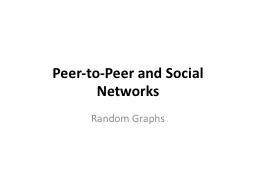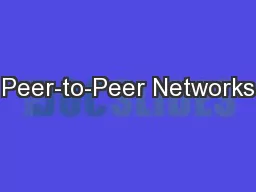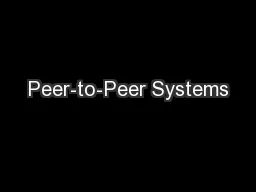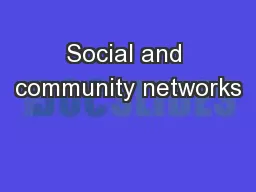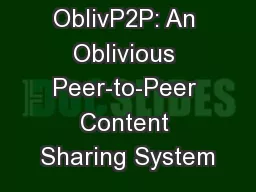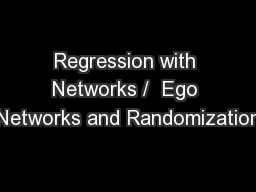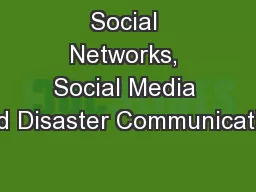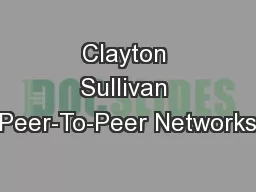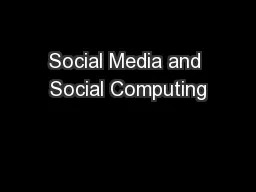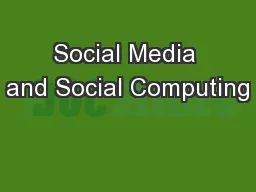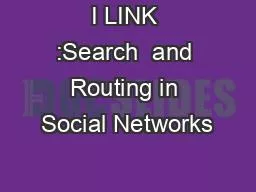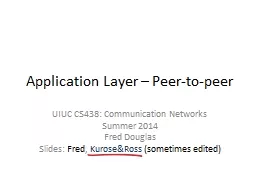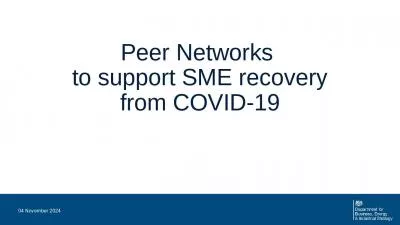PPT-Peer-to-Peer and Social Networks
Author : danika-pritchard | Published Date : 2018-02-22
Random Graphs Random graphs ErdösRenyi model One of several models Presents a theory of how social webs are formed Start with a set of isolated nodes Connect
Presentation Embed Code
Download Presentation
Download Presentation The PPT/PDF document "Peer-to-Peer and Social Networks" is the property of its rightful owner. Permission is granted to download and print the materials on this website for personal, non-commercial use only, and to display it on your personal computer provided you do not modify the materials and that you retain all copyright notices contained in the materials. By downloading content from our website, you accept the terms of this agreement.
Peer-to-Peer and Social Networks: Transcript
Download Rules Of Document
"Peer-to-Peer and Social Networks"The content belongs to its owner. You may download and print it for personal use, without modification, and keep all copyright notices. By downloading, you agree to these terms.
Related Documents

